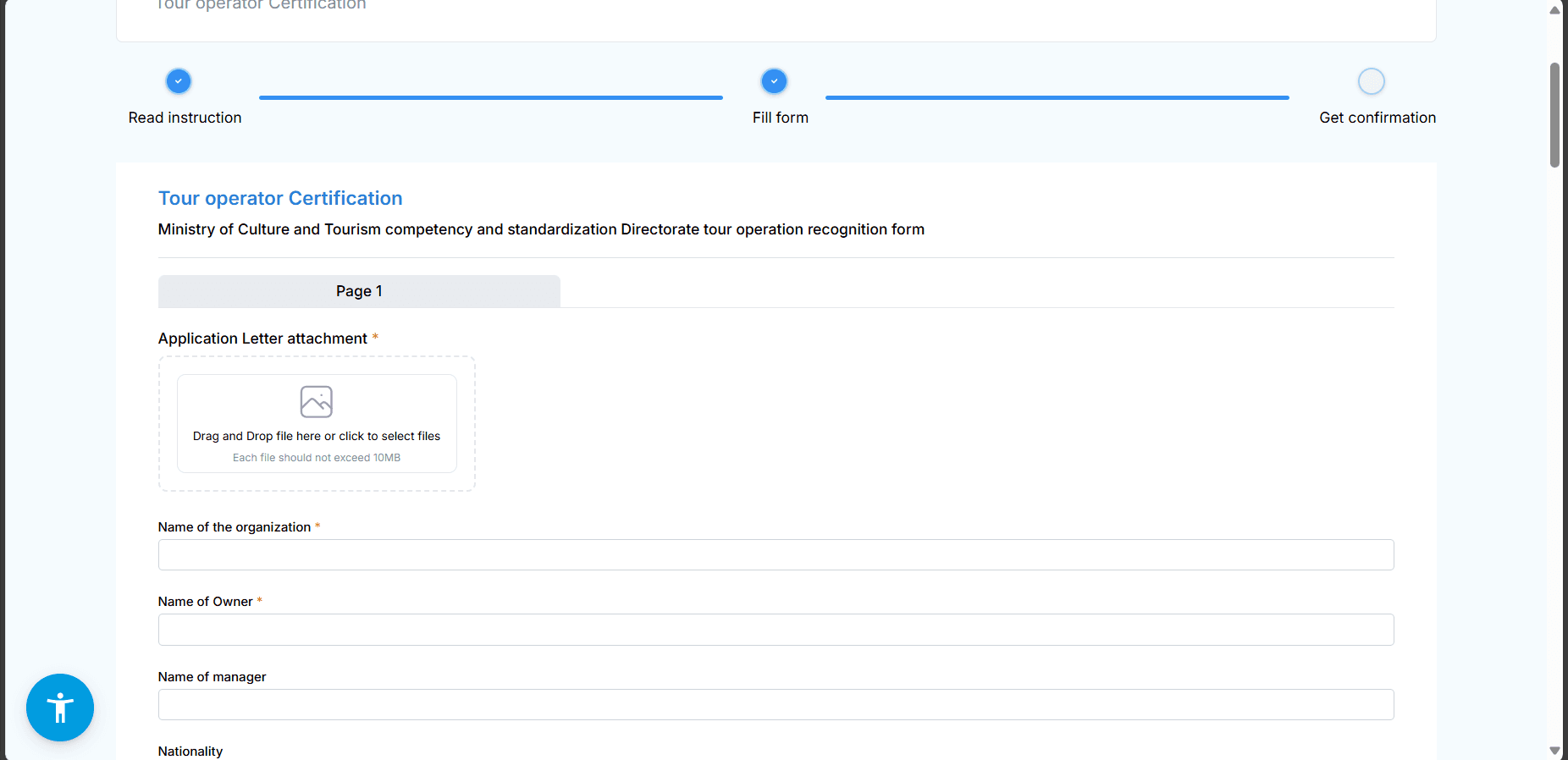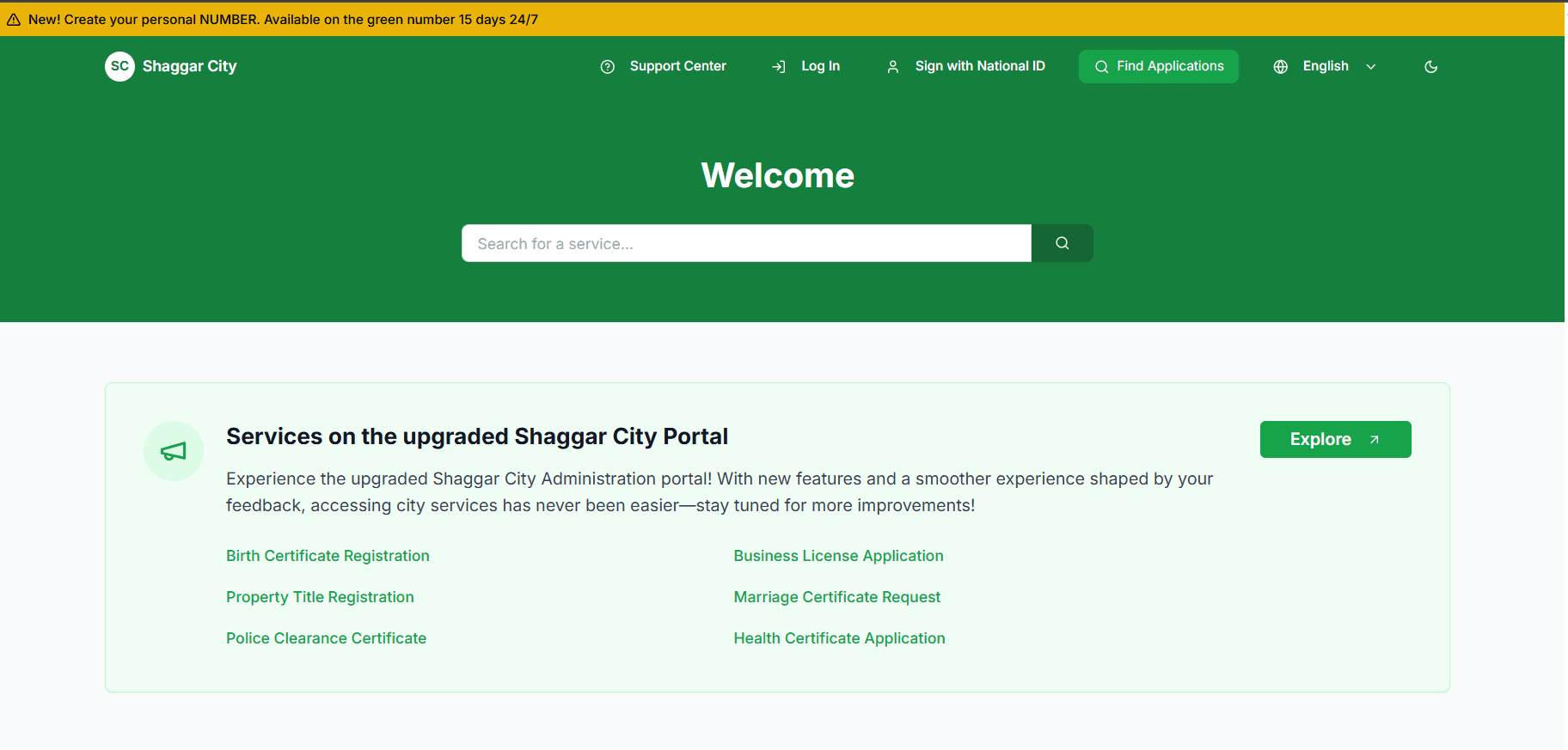Progress for 0 ad
Progress for 1 ad
Progress for 2 ad
Progress for 3 ad


Daniel Metaferiya
Addis Ababa, Ethiopia

A few months back, Eba Nizamu, an entrepreneur with a homeware business was trying to register as a supplier on the government electronic procurement (eGP) platform. Try as he may, the system failed to confirm his registration digitally. His attempts at calling also bore no fruit as the hotline number on the site turned out to be a meaningless series of digits.
"I had to find someone who worked at the office through friends to confirm my registration," Eba told Shega.
His frustrations when attempting to use a government-owned platform are far from an isolated occasion. Ethiopia’s ambitious drive to digitize public services has emerged as a cornerstone of its ongoing civil service reform. From tax filings to business registrations, a growing number of agencies have rolled out new platforms, typically branded with the now-familiar lowercase “e” prefix, signaling a move to electronic systems. However, a few days after the media fanfare dies down following the initial launch, too many of these government websites and portals fail to deliver their purported functions.
Citizens are often met with broken links, blank pages, and websites that lead to a “404”, “The page you're looking for doesn't exist or has been moved” notice. Slow loading times, incompatibility with mobile usage and questionable security are also all too common.
A visit to www.eservices.gov.et, an aggregated portal intended to resolve most public service requests, opens to a colorful homepage fitted with a sleek search bar and a registration form. Featuring over 900 entries from a multitude of government websites, the portal initially gives the impression that it can address every need from citizens with a few clicks. But several of the links’ redirect to nowhere or contain serious functionality defects.
One form which should allow users to register for returning license plates automatically sets up an appointment despite containing blank fields.

Numerous user experience (UX) challenges pervade throughout the platform which can quickly become frustrating and off putting for citizens. However, the portal copyrighted by the Ministry of Innovation and Technology (MinT) is just one of the many government websites which underdeliver and over promise.
The highly publicized E-consultation portal which was supposed to allow citizens to comment on draft laws starts to malfunction during the registration phase. A technical breakdown in a portal managed by the Justice Ministry could have far reaching consequences beyond user frustration. Unfortunately, the Ministry’s own website fares only slightly better with the latest updated proclamation being from five months back. Belated updates, poor user interface and dead links appear to be a standard feature in too many government websites.

Brook Hailu, founder and CEO of 360 technologies, a company which has developed over 50 websites for a diverse set of public agencies, believes the problems arise partly due to awareness issues. He says the lack of updates and maintenance after the websites are developed leads to many problems of functionality.
“Software is not a physical object, it requires constant updates and follow up,” Brook told Shega.
He also pointed out that most government offices start developing websites out of regulatory pressure and fail to hire competent staff to manage them. The CEO hinted at the possibility that low government wages might not necessarily be attracting the most qualified talent.
He indicated that the budget for a website is usually cut off after its launched with no one to maintain or look after it to handle emerging issues.
“The funding usually comes from NGOs,” Brook says.” When the project ends so does ownership by inhouse IT departments, it seems”
Ethiopia’s pursuit of paperless bureaucratic apparatus as part of the Digital Ethiopia 2025 strategy pins part of its success on a robust E-governance ecosystem. Though the ICT sector currently contributes just 2% to GDP below the regional average the government has made notable progress by digitizing over 130 services across a multitude of institutions through platforms like e-services, e-trade, and e-procurement. One of the primary targets in the strategy entails improving Ethiopia’s ranking in the Ease of Business index from 159th upon last count. However, despite receiving support from institutions like the European Union, some of the platforms leave much to be desired.
A new business portal under the auspices of MinT that was expected to digitize and integrate several licensing procedures for businesses is ridden with broken links. Despite featuring a host of services from electricity to construction, too many of the links’ lead to a “404 this page could not be found" abyss.
This gap between promise and result signals a troubling trend while the digital infrastructure and strategy are clearly in place, many platforms lack functional content, undermining users trust and potentially leading them to prefer analogue alternatives. While federal agencies often come into scrutiny for their faulty digital services, regional cities also depict a similar “404” affliction. From the six services available on the Shaggar City digital portal ranging from business license registration to birth certificate none of them work.

Just like most government websites in Ethiopia, other African countries also exhibit issues of usability and accessibility. Research on public websites in Tanzania highlighted a pervasive problem as nearly 50% of websites had more than 50 pages with accessibility issues. Still, websites managed by Ethiopian government agencies appear to suffer from both user interface (UI) and user experience (UX) issues. Protracted periods without updates, debugging and security checks further exacerbate potential initial gaps in design and code.
Experts attribute most of the challenges in usability to the lack of attention and continued follow-up. Melake Webshet, a senior software engineer and developer observes a general disregard for quality in most platforms. He says most in-house tech leads opt to attribute the problems of processing time, response speed and overall functionality to poor server quality or some other infrastructure issue.
“You will hear five reasons why the website is not working but no way of fixing it,” Melake told Shega.
He suspects that the financial constraints restrict the amounts allocated to servers, personnel and overall infrastructure. Nonetheless, Melake also points out that Ethiopian developers should be able to take advantage of open-source resources to overcome at least some infrastructure hurdles while also nurturing the habit of constant maintenance
“Developers need to constantly polish their skills,” he stresses. "There appear to be confusions between web apps and web pages."
Melake who has experience developing platforms for a host of international and local firms, says the efficiency and quality of a developer’s output is significantly impacted by how much of the latest technology he/she has mastered.
“Using legacy systems while new ones are available also contributes to the poor performance of government websites,” he notes.
The developer hopes to see significant improvements in the design and functionality of government websites in the long run. He believes that given the opportunity, there are enough skilled developers in Ethiopia that can significantly improve these state-managed platforms.
As Ethiopia’s increasingly adopts digital alternatives for the myriads of public and private services, smooth user experience will be one of the determinants of adoption. Notices of “site under construction”, “oops something went wrong” and “failed DNS look up” will need to be a rare sight. The road ahead will depend less on splashy launches and more on sustainable investment, user feedback, and consistent technical oversight. Recent progress in expanding internet penetration, smart phone usage and digital literacy will need to be contoured by discipline, continuous supervision and maintenance from the e-governors.
👏
😂
❤️
😲
😠

Daniel Metaferiya
Daniel Metaferiya is a writer, journalist and radio host, with a keen interest in technology. He follows developments in Ethiopia's startup ecosystem closely and is passionate about profiling unique MSMEs.
Your Email Address Will Not Be Published. Required Fields Are Marked *